Tropical fruits are a diverse group of fruits that thrive in the warm, humid climates of the tropics, typically between the Tropic of Cancer and the Tropic of Capricorn.
Characterized by their vibrant colors, distinctive flavors, and unique textures, these fruits are often rich in minerals and antioxidants. The environment of the tropics, with its year-round warmth and abundant rainfall, supports the growth of these fruits.
Tropical fruits are enjoyed locally and valued worldwide for their exotic taste. They play a crucial role in culinary traditions around the globe, especially in dishes and beverages, from smoothies and salads.
Plus, you can explore some countries that are popular for a wide range of flavorful tropical fruits.
Tropical fruits are a diverse group of fruits that thrive in the warm, humid climates of the tropics, typically between the Tropic of Cancer and the Tropic of Capricorn.
Characterized by their vibrant colors, distinctive flavors, and unique textures, these fruits are often rich in minerals and antioxidants. The environment of the tropics, with its year-round warmth and abundant rainfall, supports the growth of these fruits.
Tropical fruits are enjoyed locally and valued worldwide for their exotic taste. They play a crucial role in culinary traditions around the globe, especially in dishes and beverages, from smoothies and salads.
Plus, you can explore some countries that are popular for a wide range of flavorful tropical fruits.
42 Popular Tropical Fruits
Uncover 42 unique tropical fruits with numerous types, flavors, textures, and colors. Find out which fruits are your favorite:
Mango
- Haitai
- India
- Pakistan
- Philippines
- Drupe/stone Fruit
Mango is a tropical fruit with a sweet, rich flavor and smooth, buttery texture. When ripe, this oblong or kidney-shaped fruit has a vibrant yellow to red skin with juicy, deep orange flesh near the stone.
Mangoes range in taste from tart to exceptionally sweet, influenced by their variety and ripeness. They are widely consumed fresh, sliced in salads, blended into smoothies, or used in culinary dishes from salsas to desserts.
Pineapple
- Antigua and Barbuda
- Taiwan
- Multiple Fruit
Pineapple is a tropical fruit with a rugged appearance to protect the sweet, tangy fresh. Common pineapples have a tough, spiky exterior with stiff, green leaves.
Furthermore, the bright yellow flesh offers a crisp yet juicy texture, along with a sharp acidic bite. They are popularly consumed fresh, juiced, or used in cooking and baking for a zesty profile in cakes, grilled meats, and tropical salads.
Banana
- Central African Republic
- Cyprus
- Egypt
- Berry
Banana is an elongated and curved fruit with soft and creamy meat encased in yellow, peelable skin when ripe. The fruit is sweet and mellow, intensifying as it progresses from green to yellow and eventually to brown speckled.
Commonly enjoyed raw as a snack, bananas are mainly used for baking, smoothies, and desserts like banana bread and banana pudding. Typically, bananas have over 1000 varieties around the world, each boasting a different color or taste when ripe.
Coconut
- Maldives
- Drupe/stone Fruit
Coconut is a popular fruit in tropical areas, distinguished by its hard, fibrous outer shell and sweet water inside. This fruit is typically large and oval, with a rough, hardy surface protecting the edible white flesh and sweet water.
Young coconuts tend to come with subtly sweet water and tender meat, while fully mature ones have a thicker and crunchier layer of meat. Its creamy texture can be enjoyed fresh or processed into oil, milk, and flour for culinary usage.
Papaya
- Malaysia
- Berry
Papaya is a tropical fruit with an elongated shape and vibrant orange interior when ripe. The fruit also features small, hardy, black seeds.
This sweet fruit usually has its skin transition from green to yellow-orange when mature, with the texture also moving from crunchy to soft. Papaya is also commonly enjoyed fresh for its sweetness, achieved by simply scooping out the ripe interior with a spoon or using it in juices.
Alternatively, some countries like Vietnam and Thailand will shred the papaya into thin pieces to make a salad, making use of the crunchy nature.
Passion Fruit
- Berry
Passion fruit is a tropical fruit notable for its small, round form and tough rind. When it matures into deep purple or bright yellow, the interior is filled with juicy, edible seeds encased in a tangy, aromatic pulp.
This intense mix of sweet and sour flavors makes passion fruit a common choice for smoothies, yogurts, desserts, and marinades for savory dishes.
Dragon Fruit
- Berry
Dragon fruit, a tropical delight, is known for its appearance being similar to a dragon egg. The fruit has an oblong shape, typically ranging from 6 to 12 cm long, with vibrant red skin adorned with green scales.
The inside hosts either white or pink flesh, dotted with numerous small, edible black seeds with a crunchy texture coming from the seeds and the juiciness of a melon. Dragon fruit flavor is mildly sweet, akin to a blend of pear and kiwi.
Dragon fruits are native to Central and South America, especially in various tropical and subtropical regions worldwide. They are best used for fruit salads or tropical smoothies with other fruits.
Lychee
- Drupe/stone Fruit
Lychee is a tropical fruit distinguished by its rough, red outer skin and translucent white flesh. This small, round fruit is typically about the size of a walnut and has a sweet, floral taste when fully ripe.
As for the meat, lychee is smooth and jelly-like, similar to a grape, but slightly firmer. Lychees are most commonly enjoyed fresh, with their peels and central seeds removed, making them a popular choice for snacking.
Additionally, they are used in desserts, cocktails, and various dishes where their distinctive flavor can be showcased.
Guava
- Berry
Guava is a tropical produce, boasting a round to oval shape and a soft, edible rind ranging from green to yellow. Under the rind lies pink or white flesh dotted with tiny hard seeds that are crunchy.
This fruit’s flesh is delightfully granular yet juicy, making it a favorite for juices, jams, and exotic sauces. Guava is often diced into a fruit salad, blended into a smoothie, or stewed as a dessert.
Durian
- Indonesia
- Malaysia
- Singapore
- Multiple Fruit
Durian is a spikey, tropical fruit known for its large size, one-of-a-kind aroma, and taste. The fruit is covered by a thick and spiky husk with creamy yellow flesh that is rich and custardy.
Often referred to as the ‘king of fruits’ in Southeast Asia due to their intense flavor, the custard part of durian is a combination of sweet, savory, and creamy elements, along with a soft and smooth texture.
Because of the discomforting smell, durians are often banned from local transport and even at airports.
Jackfruit
- Bangladesh
- Sri Lanka
- Aggregate Fruit
Jackfruit is a tropical fruit notable for being the largest tree-borne fruit, reaching up to 55 kilograms in weight and up to 90 centimeters in length. This huge fruit has a rugged and spiky exterior, containing sweet, fibrous flesh ranging from yellow to orange.
The flavor of jackfruit is often compared to a combination of apple, pineapple, mango, and banana. Furthermore, the meat is rather chewy when fresh and cooked, making jackfruit an ideal sub to mimic meat texture in vegan or vegetarian cooking.
Rambutan
- Drupe/stone Fruit
Rambutan is recognized for its hairy, leathery outer shell and juicy, translucent flesh. Native to Southeast Asia, this spherical to oval fruit ripens into a bright red or sometimes yellow hue. It offers a tropical sweet and sour flavor profile, which makes it a hit in fruit salads.
Plus, the meat of rambutan is firm yet gelatinous and chewy simultaneously. Thriving in tropical climates, rambutans are often savored as they are for the pure, sweet, and lightly sour touch.
Star Fruit
- Berry
Star fruit is easily recognized by its vibrant yellow color and unique star shape when sliced crosswise. This tropical fruit is crisp and juicy, with a flavor fluctuating between mildly sweet and tart.
Furthermore, star fruits are somewhat firm and watery, usually used raw in both salads and fruit platters. The fruit is also popular as a garnish due to its striking appearance, adding a decorative touch to drinks and meals.
Kumquat
- Citrus
Kumquat is a small, oval-shaped citrus fruit from Eastern Asian areas that starts off green and ripens to bright orange. Tropical by nature, kumquat boasts a sweet rind and tart, juicy interior, which can be enjoyed raw or used in marmalades, desserts, and savory dishes.
Typically less than two inches long, kumquats are ideal for consuming whole. The fruit texture is slightly firm, and they’re known for a burst of sweetness flavor with a tangy kick.
Tamarind
- Pod
Tamarind is a tropical fruit encased in a brown, pod-like shell, offering a tangy and sometimes sweet flavor. Native to Africa but widely grown in Asia, this pulposus fruit is fibrous and paste-like in texture, becoming dark brown when mature.
Tamarind is mostly for culinary usages, adding a sour note to sauces, marinades, drinks, and desserts. It’s also a staple in many traditional dishes worldwide, especially in Indian and Southeast Asian cuisines.
Sapote
- Berry
Sapote is a tropical delight that is round to oval in shape and comes in various species. The fruits can share a creamy texture and sweet, often malty, depending on the cultivated regions and species.
The outer skin can range from a brownish hue to vibrant green. Additionally, sapote’s flesh is soft, akin to a ripe pear, making it a favorite for fresh consumption and in smoothies or desserts.
Custard Apple
- Berry
Custard apple is a tropical fruit known for its unique heart shape and knobby skin, which encloses sweet, creamy flesh with a grainy texture. Predominantly green to brown when ripe, this fruit is appreciated for its deliciously sweet and slightly tangy flavor.
Custard apples are commonly enjoyed fresh, but you need to be on the lookout for small black seeds that need to be spit out.
Soursop
- Berry
Soursop is a tropical fruit with a spiky green exterior and a soft, fibrous interior containing large, black seeds. The fruit’s flavor combines strawberry and pineapple with creamy and citrus notes, making it popular in juices and desserts.
Soursop is also noted for its meaty texture, which makes it a substantial addition to smoothies and fruit salads. It thrives in tropical climates and is native to the Caribbean, Central America, and parts of South America.
Breadfruit
- Multiple Fruit
Breadfruit is known for its starchy texture, which is a large, irregular, sphere-shaped fruit, typically green to yellowish when ripe. Usually, this tropical fruit has creamy, dense flesh, similar to baked bread.
It is primarily roasted, fried, or boiled and can be processed into flour for baking. Originating from New Guinea and the Indo-Malay region, breadfruit is cultivated in various regions, serving as a significant food source due to its high carbohydrate content.
Longan
- Drupe/stone Fruit
Longan is a small, round fruit with delicate, translucent white flesh encased in a thin brown shell. The flesh is often likened to an eyeball due to its round and black appearance.
As for the meat, longan offers a sweet and musky flavor that is subtly like lychee. This fruit is native to regions where tropical climates support its growth, making it popular both fresh and dried.
Mangosteen
- Thailand
- Berry
Mangosteen is a small, round fruit with a deep purple rind when ripe, enclosing a fragrant, snowy-white interior. Each segment of its juicy flesh offers a sweet yet subtly tart flavor, combining both peach and pineapple notes.
As for the texture, it is soft and creamy, similar to that of a ripe peach. Renowned for its delicate taste and texture, mangosteen is often enjoyed fresh, used in desserts, or incorporated into beverages, often referred to as the “Queen of fruit.”
In Thailand, the country even makes mangosteen their national fruit, with the peak season ranging from May to August.
Feijoa
- Berry
Feijoa is an egg-shaped fruit with green, bumpy skin and a pale, jelly-like interior dotted with small seeds. Its unique taste blends hints of strawberry, pineapple, and guava, offering a sweet and aromatic flavor.
In terms of the pulp, it has a granular texture like a pear. Ideally, this fruit is eaten raw and scooped directly from the halved shell. Originating from the highlands of South America, the fruit thrives in subtropical environments with mild climates.
Persimmon
- Berry
Persimmon is a vibrant orange fruit, typically shaped like a flattened sphere. This mildly soft fruit features a smooth, glossy exterior, and when ripe, the flesh becomes incredibly soft and almost jelly-like.
The persimmon flavor is intensely sweet with hints of honey. Commonly consumed fresh, persimmons are known to become richer and sweeter when mature. Primarily grown in East Asia, persimmons prefer mild to warm climates.
Kiwano
- Berry
Kiwano is an exotic tropical fruit with an oblong shape and a vivid orange, spiky exterior. Inside, it houses a bright green, gelatinous pulp filled with edible seeds, boasting a taste blend of banana, lime, and cucumber.
As for texture, kiwano is similar to a passionfruit, often scooped out and eaten raw or added to salads and desserts. This fruit, also known as horned melon, is native to Africa but has been cultivated in other regions, such as California and New Zealand, for its unique appearance.
Acai Berry
- Berry
Acai berry is a small, round, and deep purple fruit resembling a grape but with a smaller, harder seed. Originating from the rainforests of South America, this berry has a rich, earthy flavor often described as a blend of wild berries and chocolate.
Interestingly, the texture is somewhat gritty when eaten raw and is commonly consumed in smoothie bowls, juices, or as a pulp. Plus, acai is favored for its anti-aging and weight-loss properties.
Snake Fruit
- Drupe/stone Fruit
Snake fruit, also known as salak, is a small, oval fruit with scaly, reddish-brown skin similar to snakeskin. Native to Indonesia, the fruit offers a sweet and tangy flesh that is crisp and grainy in texture, similar to apples.
Each fruit contains one to two large, inedible seeds, often enjoyed fresh. Here’s a tip, you can peel snake fruit easily by pinching the tip to reveal the lobes inside, which is great for making preserves and syrups.
Jaboticaba
- Berry
Jaboticaba is a unique fruit that grows directly on its tree trunk in clusters. This Brazilian native features a thick, purple-black skin encasing a translucent, gelatinous pulp.
Sweet and slightly tart in flavor, jaboticaba is often compared to a blend of grape and lychee in flavor profile. The fruit is typically eaten fresh or used to make jellies, wines, and liqueurs due to its high pectin content.
Canistel
- Berry
Canistel is a tropical fruit with bright yellow, smooth, and waxy skin featuring a shape similar to an elongated bell. Native to Central America, the fruit’s flesh is dense, dry, and sweet, like hard-boiled egg yolk.
Often called “eggfruit”, its creamy consistency and sweet, pumpkin-like flavor make canistel popular for use in desserts, smoothies, and spreads.
Sapodilla
- Berry
Sapodilla is a tropical fruit with brown, sandy skin and grainy, sweet flesh. This sweet fruit offers a mixture of pear, brown sugar, and cinnamon.
Native to Central America and the Caribbean, the fruit is round to oval-shaped and typically about the size of a small apple. Its flesh is incredibly sweet and malty, hence, locals tend to enjoy the fruit fresh or use it in desserts.
The fruit’s high fructose content provides a natural energy boost, while its smooth, sticky texture is ideal for jams and sweet sauces.
Calamansi
- Citrus
Calamansi is a small citrus fruit with a bright green, thin skin that turns golden yellow when fully ripe. Native to Southeast Asian cuisine, this fruit is round and typically the size of a large grape.
Calamansi has a tart, zesty flavor with a hint of sweetness, resembling a cross between a lime and a mandarin orange. Its juice is highly valued for its vibrant tang, which is used to flavor beverages, marinades, and sauces.
Calamansi is also popular as a condiment, often squeezed over dishes to add a fresh, citrusy burst.
Ugli Fruit
- Citrus
Ugli fruit is a citrus fruit known for its irregular, rough, and slightly wrinkled skin, typically yellow-green with a tinge of orange. Originating in Jamaica, this tropical fruit is larger than a grapefruit and has a sweet, tangy flavor.
The pulps are juicy and segmented, similar to other citrus fruits, and the peel is easily peelable. Ugli fruit is often enjoyed fresh, juiced, or added to salads and desserts for a refreshing citrus kick.
Caimito
- Berry
Caimito is a tropical fruit with a smooth, round shape and colors ranging from purple to green. Native to the West Indies and South America, it’s also known as a star apple for the star-shaped pattern visible in its juicy flesh when cut across the middle.
The fruit offers a sweet and mild flavor with cloudy juice similar to milk. Caimito is typically eaten fresh; the flesh can be scooped out of the halved fruit, avoiding the skin and seeds.
Surprisingly, your fingers and mouth can get quite sticky if they come in contact with the sap from the rind, which is why I recommend scooping out the flesh instead.
Plantain
- Berry
Plantain is a type of banana distinguished by its longer, firmer, and starchier fruit, usually cooked before consumption. Unlike the common banana, plantains are typically green or yellow with a thick skin that’s difficult to peel when unripe.
When green, plantains are treated like vegetables, fried, boiled, or made into chips. As they ripen and turn yellow to black, they become sweeter and can be used in desserts.
Plantains are a staple in Caribbean, Latin American, and African cuisines, often served as a side dish, mashed in stews, or used as a base for savory snacks.
Ackee
- Jamaica
- Nigeria
- South Africa
- Berry
Ackee is a fruit native to West Africa, famously adopted as Jamaica’s national fruit and a key ingredient in the traditional dish, ackee, and saltfish. When ripe, this tropical fruit has a red outer skin that naturally splits open to reveal three black seeds and bright yellow, soft, edible flesh.
The texture of the flesh is creamy with mild and nutty flavors, often compared to scrambled eggs when cooked. Ackee must be consumed only when fully ripe and properly prepared, as unripe or improperly prepared ackee contains toxins that can be harmful.
Cashew
- Nut And Seed
Cashew is a unique fruit of the cashew apple and the cashew nut. The nut, encased in a hard shell at the end of the edible, pear-shaped apple, is widely consumed globally.
Often, cashews are now cultivated in various tropical climates. The cashew apple, less commonly exported due to its fragility, has a tart flavor and is enjoyed fresh or used to make alcoholic beverages in regions where it’s grown.
Cupuaçu
- Brazil
- Berry
Cupuaçu is a tropical fruit from the Amazon rainforest, closely related to cocoa. The fruit has a brown, hairy exterior and is about the size of a melon.
Inside, it contains a creamy white pulp that offers a complex flavor profile. This pulp is incredibly aromatic and is commonly used in desserts, smoothies, and jellies.
Hog Plum
- Drupe/stone Fruit
Hog plum is a tropical fruit coming from the Americas and parts of South Asia. The fruit features a small, oval shape and typically presents vibrant yellow to orange skin when ripe.
The flesh inside is fibrous and juicy, with tart and sweet being the most common flavor depending on the variety and ripeness. This fruit is often used in a variety of culinary applications, including pickles, jams, and juices.
In traditional medicine, parts of the hog plum tree are used for their purported health benefits. Its strong, distinctive flavor and versatility make it a popular choice in many tropical regions for enhancing the taste of both sweet and savory dishes.
Guaraná
- Berry
Guaraná is a tropical fruit native to the Amazon basin, particularly popular in Brazil. It’s notable for its small, bright red fruit that splits open to reveal black seeds covered by white arils, giving them a distinctive eye-like appearance.
Today, these seeds are commonly processed into powders and extracts used in energy drinks, dietary supplements, and teas. Guaraná is valued for its high caffeine content, which is higher than that of coffee beans.
Mamoncillo
- Berry
Mamoncillo is a tropical fruit, also known as Spanish lime, native to the Americas’ tropical regions. The fruit features a tough, green skin and a juicy, translucent flesh, which clings tightly to a large seed.
The fruit is small, roughly the size of a lime, and is often enjoyed in groups, making it a staple at social gatherings in tropical climates
Mamoncillo flesh is sweet and tangy, typically consumed by cracking the skin and sucking the flesh off the seed. Aside from being eaten fresh, it is also used to make beverages, desserts, and jams.
Marang
- Multiple Fruit
Marang is a Filipino and Borneo fruit with spiky green skin and a unique tropical profile. The fruit contains creamy white segments that are sweet, juicy, and fragrant, with a taste similar to a blend of jackfruit and banana.
Furthermore, the soft and custard texture makes it a delightful treat when eaten fresh. Marang is typically consumed by breaking open the tough outer shell to reveal the aromatic flesh.
Pomegranate
- Afghanistan
- Azerbaijan
- Iran
- Berry
Pomegranate is a common fruit in tropical areas known for its vibrant red, leathery skin and many juicy seeds called arils. Each aril is encased in a translucent, ruby-red pulp that bursts with a tart-sweet flavor.
Native to the Middle East and widely cultivated in Mediterranean regions, the fruit comes in compartments with a spongy, white membrane. Pomegranate arils are commonly eaten fresh, sprinkled over salads, or used to make juice, sauces, and desserts.
Wax Apple
- Berry
Wax apple is a tropical fruit, also known as the rose apple or water apple, with bell-shaped, glossy skin that ranges from light green to deep red. Native to Southeast Asia, the fruit’s crisp and juicy flesh has a mildly sweet flavor with a hint of rose essence.
The fruit is mostly hollow, with a small core containing a few seeds. Wax apple is often enjoyed fresh for its refreshing taste and hydrating properties, making it a popular choice in hot climates.
What Tropical Fruits Are Ideal for Making Drinks?
When it comes to beverages, tropical fruits can add a unique flavor to the mixture of various refreshment types:
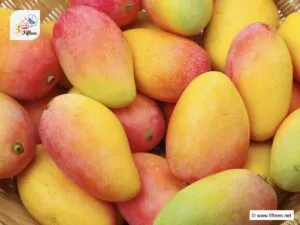
Mango
Creates creamy and refreshing smoothies with natural sweetness and smooth texture.
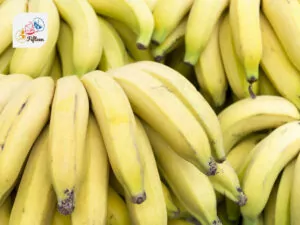
Banana
Adds smooth and creamy texture to smoothies.
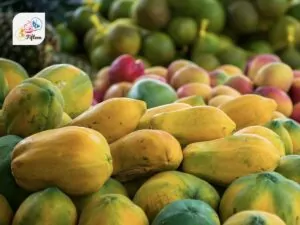
Papaya
Enhances smoothies with its sweetness and smooth texture.
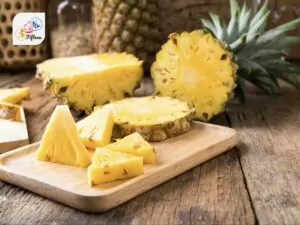
Pineapple
Adds a tangy and vibrant flavor to juices
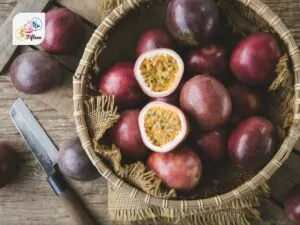
Passion Fruit
Adds tangy and vibrant flavor to juices.
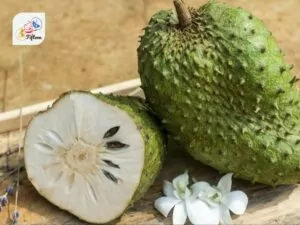
Soursop
Among favored white fruits, soursop provides a balance of sweetness and tartness in juices.
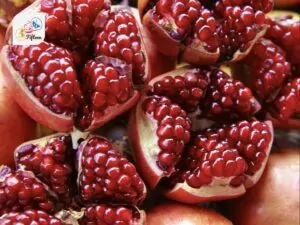
Pomegranate
Balances sweetness and tartness in juices.
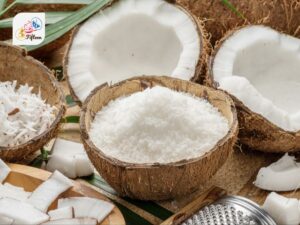
Coconut
Adds tropical sweetness and exotic flair to cocktails.
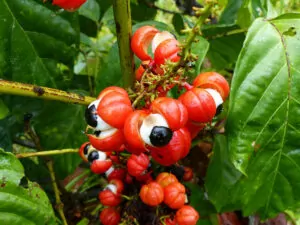
Guaraná
Adds tropical and energizing flavor to mocktails.
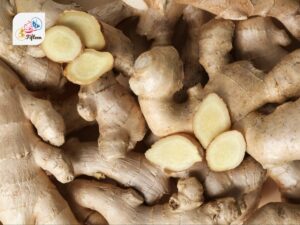
Ginger
Infuses hot teas with aromatic and soothing flavors.
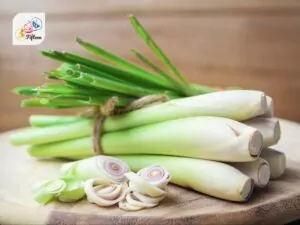
Lemongrass
Infuses hot teas with aromatic and soothing flavors.
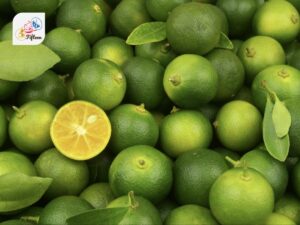
Calamansi
Adds a refreshing note to hot teas.
Interestingly, these tropical fruits are highly adaptable depending on the region, as each country can offer a different approach to produce a unique flavor.
What Are Regions Well-known for Tropical Fruits?
Tropical fruits are available in many countries and continents around the world, but these countries are renowned for their diverse tropical produce:
Mangoes, bananas, and papayas are prominent fruits cultivated in Australia, with their flavors and textures being popular in both local and international markets.
The Hawaii island is famous for various Hawaiian fruits like pineapples, papayas, and guavas, contributing significantly to the state’s agricultural exports.
Thanks to rich soil and a history in agriculture, many fruits are grown in Asia, including a diverse range of tropical fruits.
Dragon fruit, lychee, and rambutan are fruits widely grown in Vietnam, offering exotic and diverse flavors appreciated globally.
Many Malaysian fruity options include tropical fruits such as durian, mangosteen, and rambutan, which are known for their distinctive flavors and wide availability.
The Philippines is well-known for its wide variety of tropical fruits, including mangoes, pineapples, and bananas, which are celebrated for their sweetness and quality.
Mangoes, particularly the Chaunsa and Sindhri varieties, are highly prized in Pakistani culinary staples, like falooda, for their exceptional sweetness and juiciness.
India is renowned for its vast variety of mangoes, along with bananas and guavas, each Indian fruity pick offers distinct tastes and textures.
Fruits grown in Japan, such as mangoes, pineapples, and lychees, are mainly from the southern islands of Okinawa and Kagoshima. Although Japan is not typically associated with tropical fruits, it still excels in producing them with exceptional taste and quality.
With blessed climates, fruits in South America boast a wide range of choices, with numerous choices varying in shapes and sizes.
Guyana is famous for its production of tropical fruits such as mangoes, papayas, and sapodillas, contributing to many Guyanese refreshments with their natural taste.
The region is known for a wide range of fruity Caribbean produce, with choices like mango, coconut, pineapple, soursop, and tamarind being popularly consumed or adapted into many kinds of food and drinks.
Jamaica is famous for diverse Jamaican fruits with tropical options like ackee, mangoes, and papayas, which are integral to both the local cuisine and export market.
Passionfruits, coconut, pineapple, soursop, and breadfruit are common fruit options in Cuba, mainly used in everyday cuisine to add a touch of freshness.
In Haiti, the population favors many Haitian fruits like soursop, mango, and tamarind, which are also tropical by nature.
Which tropical fruit is your favorite? Let me know in the comment section regarding tropical fruits so others can learn from your experience.
Furthermore, you should share these fruits with others who are looking to add exotic flavors to their daily consumption.


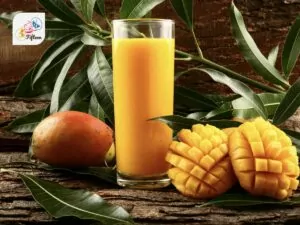

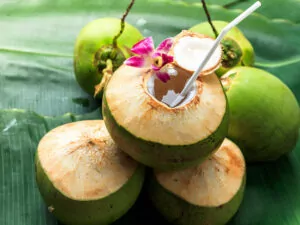
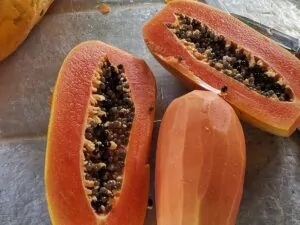
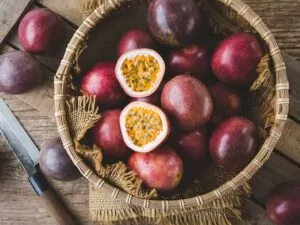
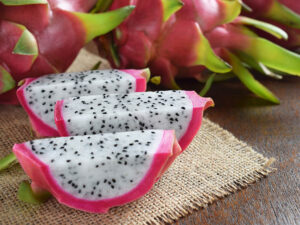
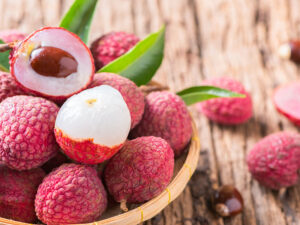
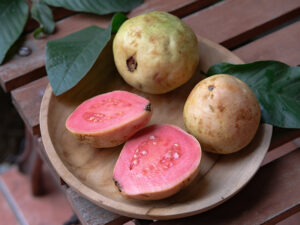
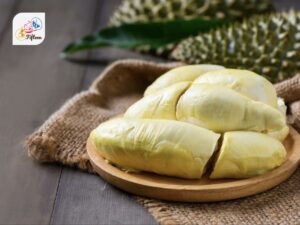
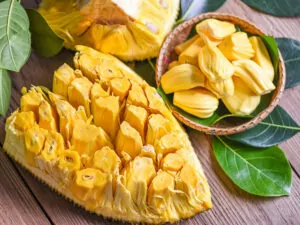
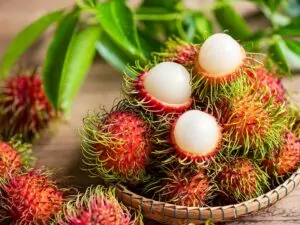
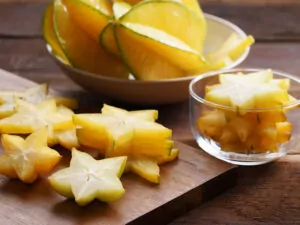
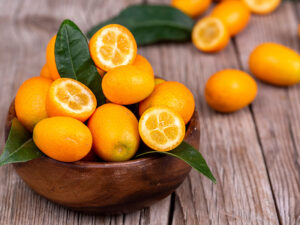
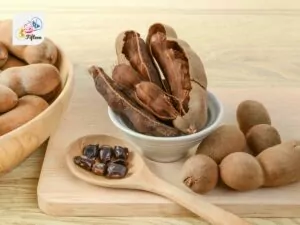
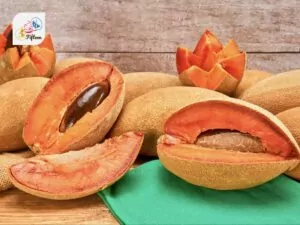
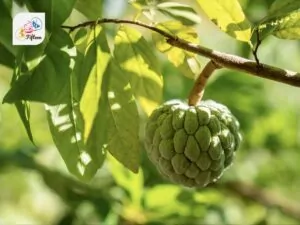
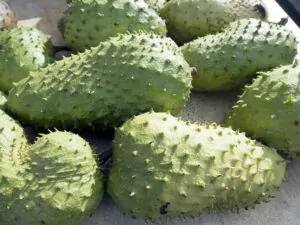
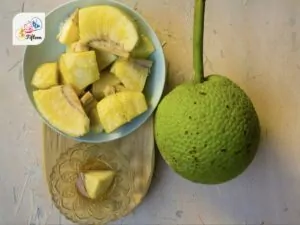
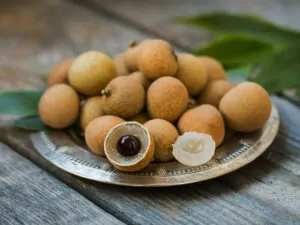
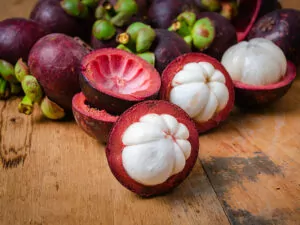
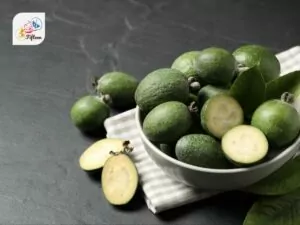
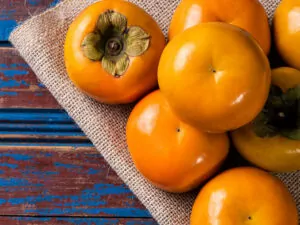
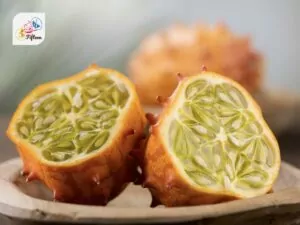
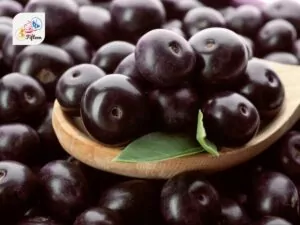
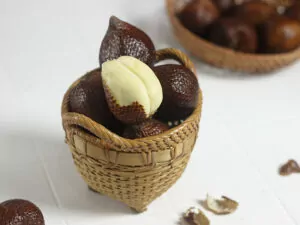
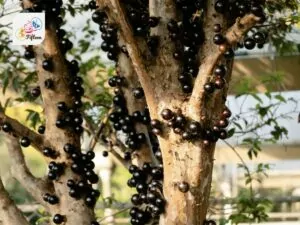
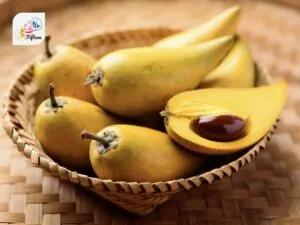
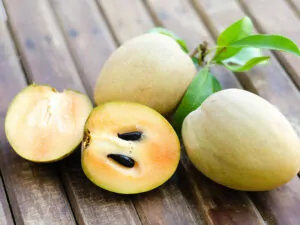
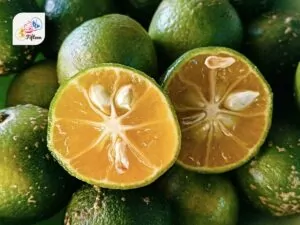
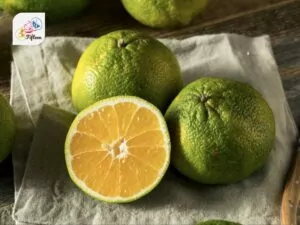

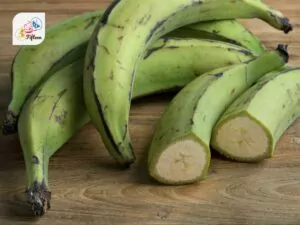
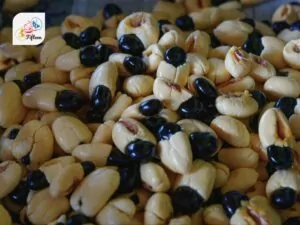
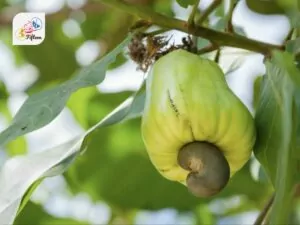
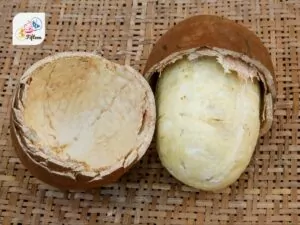
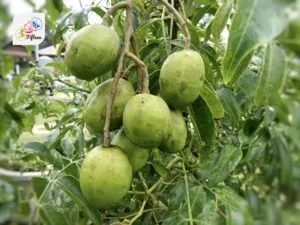
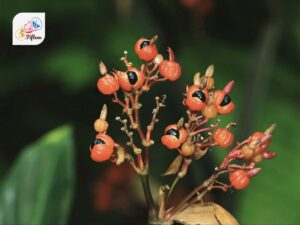
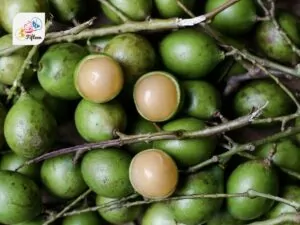
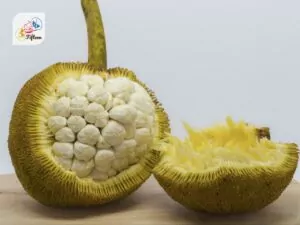
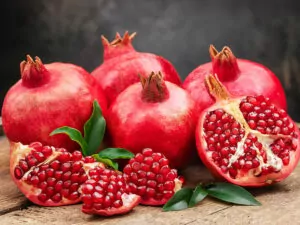
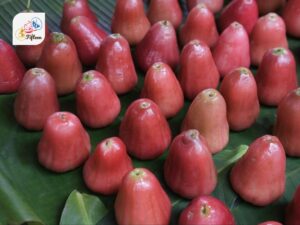
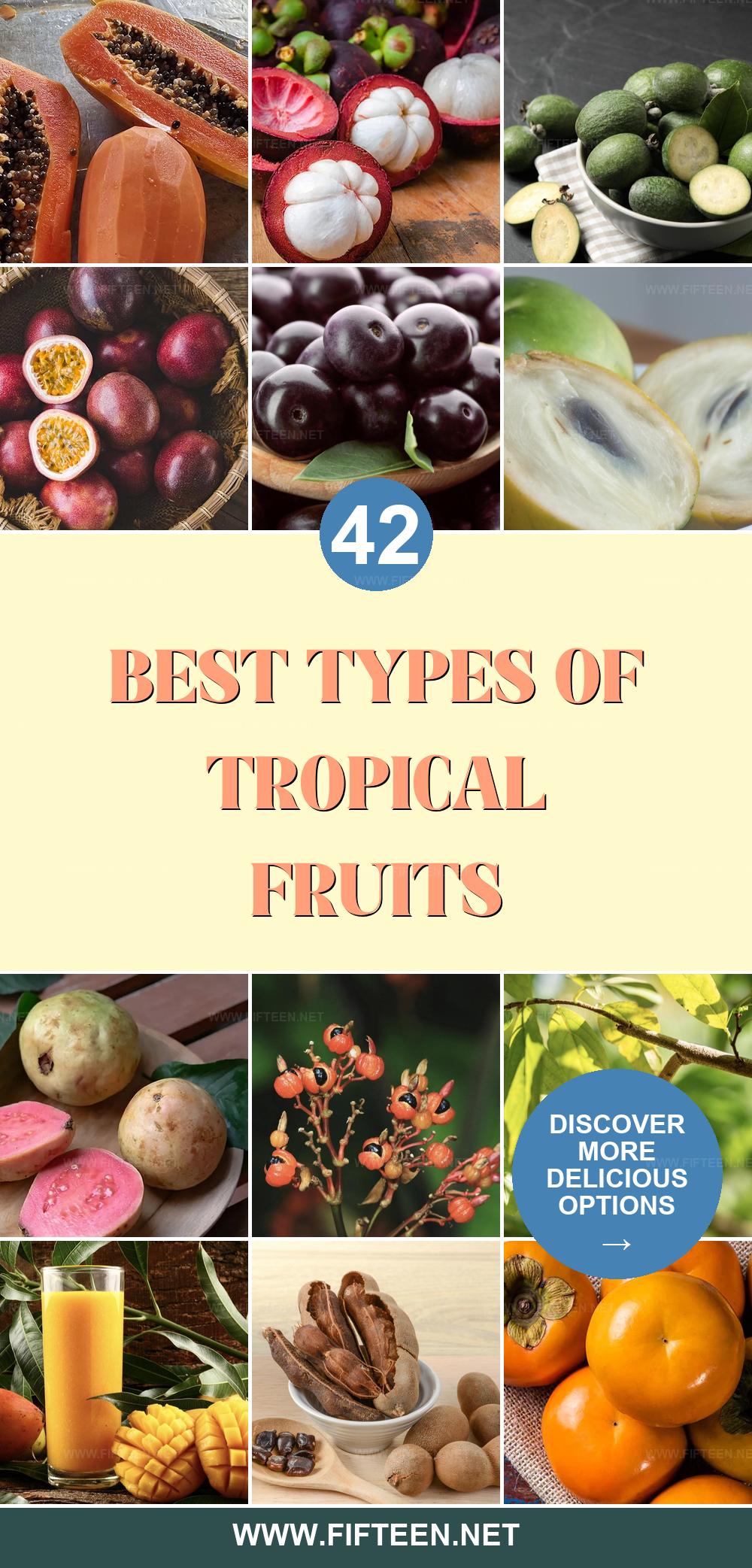
Jamie Scott
Editor in Chief, Senior Content Writer
Expertise
Home Cooking, Meal Planning, Recipe Development, Baking and Pastry, Food Editor, Cooking-video Maker, Western Food Evaluation Expert
Education
Le Cordon Bleu College of Culinary Arts
Local Community College, New York, NY
Jamie Scott is a skilled culinary expert and content creator specializing in Western cuisine. With over 15 years in the culinary field and formal training from Le Cordon Bleu, Paris, Jamie deeply understands how to blend nutrition with delicious flavors. His passion for cooking matches his commitment to making healthy eating accessible and enjoyable.
On Fifteen.net, Jamie brings a fresh perspective to classic dishes and beverages, offering readers insightful recipes, cooking tips, and a fresh view on meal planning that emphasizes taste, health, and simplicity.